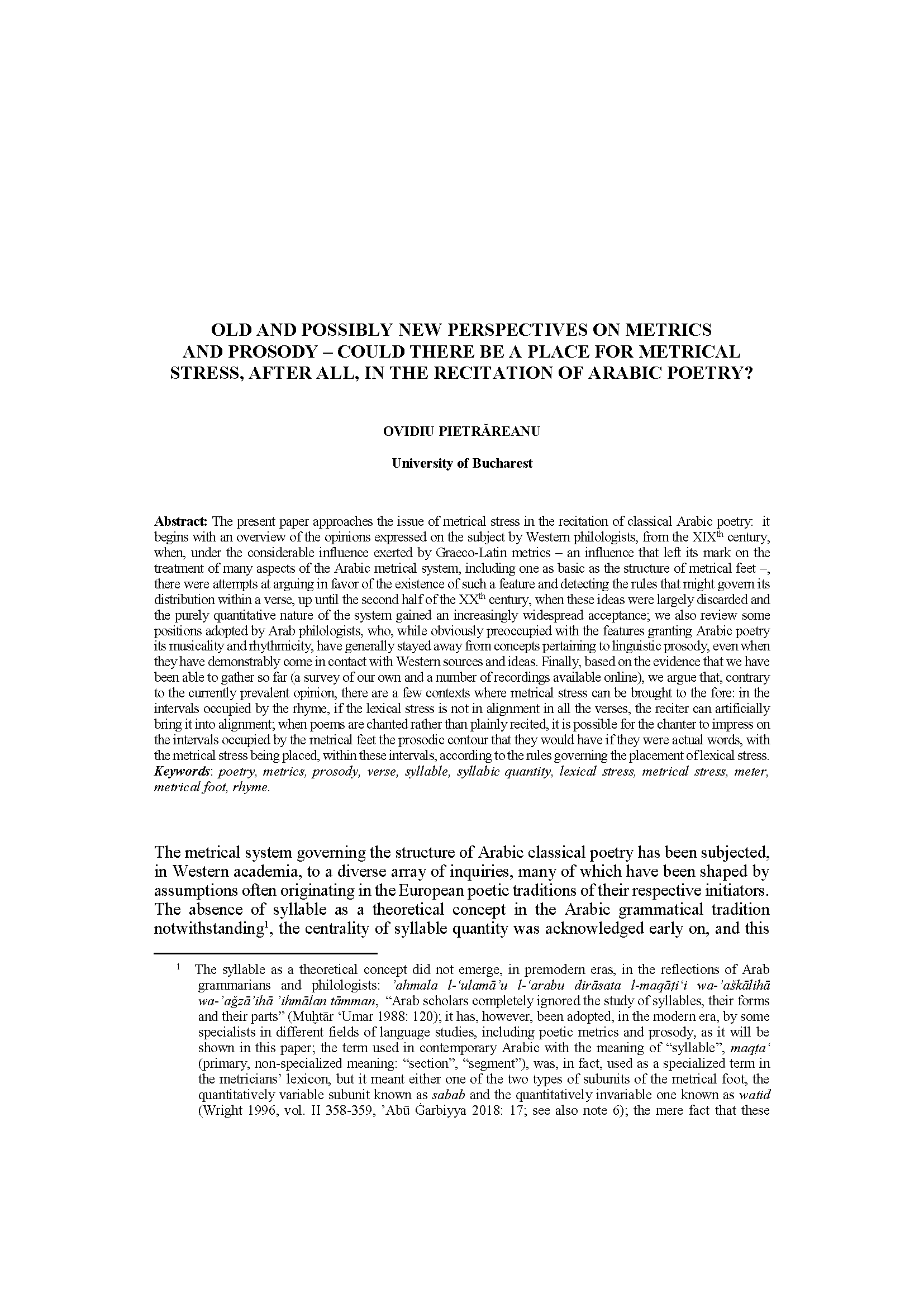OLD AND POSSIBLY NEW PERSPECTIVES ON METRICS AND PROSODY – COULD THERE BE A PLACE FOR METRICAL STRESS, AFTER ALL, IN THE RECITATION OF ARABIC POETRY?
DOI:
https://doi.org/10.62229/roar_xxii/7Keywords:
poetry, metrics, prosody, verse, syllable, syllabic quantity, lexical stress, metrical stress, meter, metrical foot, rhymeAbstract
The present paper approaches the issue of metrical stress in the recitation of classical Arabic poetry: it begins with an overview of the opinions expressed on the subject by Western philologists, from the XIXth century, when, under the considerable influence exerted by Graeco-Latin metrics – an influence that left its mark on the treatment of many aspects of the Arabic metrical system, including one as basic as the structure of metrical feet –, there were attempts at arguing in favor of the existence of such a feature and detecting the rules that might govern its distribution within a verse, up until the second half of the XXth century, when these ideas were largely discarded and the purely quantitative nature of the system gained an increasingly widespread acceptance; we also review some positions adopted by Arab philologists, who, while obviously preoccupied with the features granting Arabic poetry its musicality and rhythmicity, have generally stayed away from concepts pertaining to linguistic prosody, even when they have demonstrably come in contact with Western sources and ideas. Finally, based on the evidence that we have been able to gather so far (a survey of our own and a number of recordings available online), we argue that, contrary to the currently prevalent opinion, there are a few contexts where metrical stress can be brought to the fore: in the intervals occupied by the rhyme, if the lexical stress is not in alignment in all the verses, the reciter can artificially bring it into alignment; when poems are chanted rather than plainly recited, it is possible for the chanter to impress on the intervals occupied by the metrical feet the prosodic contour that they would have if they were actual words, with the metrical stress being placed, within these intervals, according to the rules governing the placement of lexical stress.





